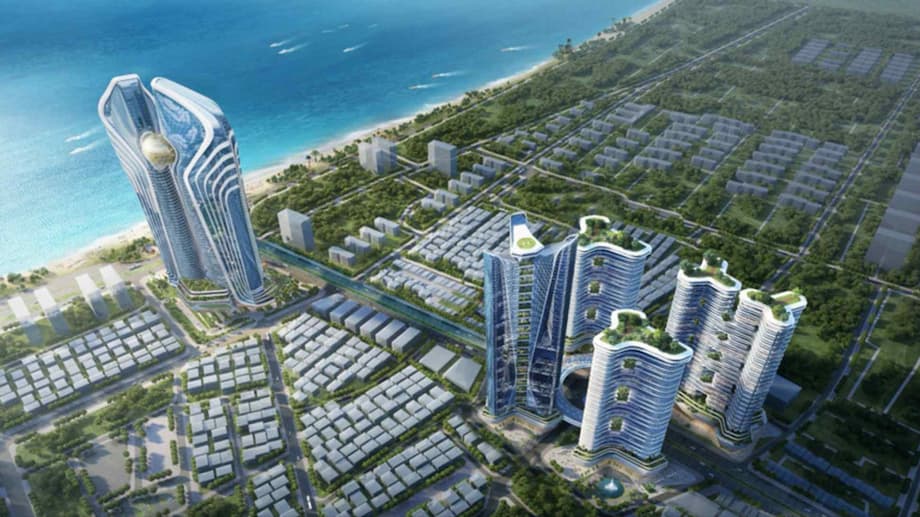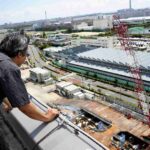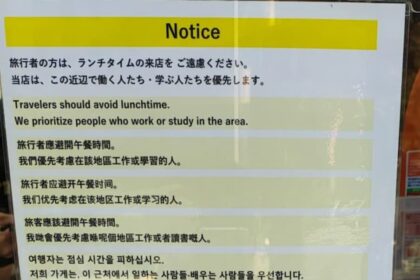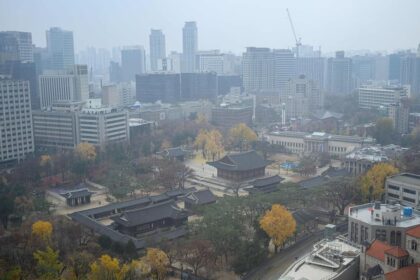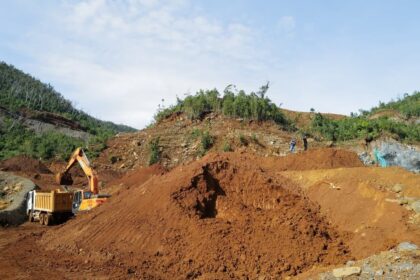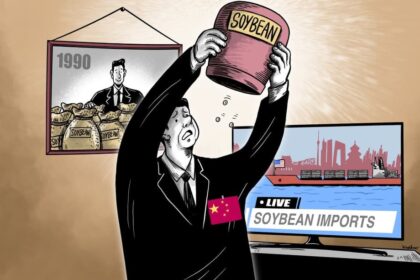Inside Vietnams plan to build a global facing financial hub
On a stretch of Danangs white sand beach, an empty tract looks out toward a bay that city planners imagine as a future address for global finance. Seven kilometers away, another site offers sweeping views reminiscent of San Francisco Bay. Local plans even include the idea of building artificial islands in Danang Bay, inspired by Dubais Palm Islands. All of it speaks to an ambition that is moving from sketches to law.
- Inside Vietnams plan to build a global facing financial hub
- How the two city model will work
- What the new rules change for investors and firms
- Incentives: tax, land, visas, and talent
- Timeline, sites, and infrastructure
- Competing with Singapore and Hong Kong
- Fintech, digital assets, and green finance
- Benefits and risks for the wider economy
- How companies can participate
- At a Glance
In June 2025, Vietnams National Assembly approved a resolution that creates an International Financial Center, with hubs in Ho Chi Minh City and Danang. The framework takes effect on September 1, 2025 and sets out special policies, governance, and a rulebook designed to connect Vietnam with world markets. The government targets a place in the Global Financial Centers Index (GFCI), aiming for rank 75 by 2035 and top 20 by 2045. English will be the official working language inside the center. The design combines global standards with domestic oversight.
The plan has a concrete build program. Ho Chi Minh City will start construction in September on a 7 billion dollar complex spanning 783 hectares across District 1 and the Thu Thiem New Urban Area. A 9.2 hectare core in Thu Thiem will host regulators, supervisory bodies, and specialized courts. Authorities want initial operations to begin in 2025 and expect the core build to take about five years. Danang will run a pilot phase from 2025 to 2028 to test innovative products before wider rollout.
How the two city model will work
Vietnam is adopting a one center, two destinations approach. The two hubs will operate under a unified management model that includes an executive agency and a supervisory agency. A dedicated court and an arbitration center will handle disputes. The resolution allows the center to operate under international common practice even where this differs from existing domestic law, subject to core legal principles and national security. This is meant to offer a predictable environment for cross border finance while keeping state oversight in place.
The center will be open to banks, securities firms, asset managers, insurers, fintech companies, and a range of support services. Membership brings a separate legal and regulatory environment inside Vietnam, with rules that mirror major financial hubs. Transactions between members will be handled under a liberalized foreign exchange regime. Dealings with the rest of the onshore economy will be more restricted to preserve financial stability and to keep ring fencing clear.
Ho Chi Minh City capital markets anchor
Ho Chi Minh City, the countrys commercial capital and home to the Ho Chi Minh Stock Exchange (HOSE), will house the flagship hub. The build covers downtown Ben Thanh Ward and Thu Thiem. The center will focus on banking, asset management, capital markets, fintech, and derivatives trading. Officials also plan new exchanges for commodities and carbon. The city generates about one quarter of national GDP, and the existing financial ecosystem gives it a head start in attracting global banks, funds, and insurers.
Danang innovation test bed
Danang will specialize in green finance, digital financial services, and controlled pilots for crypto assets and other cross border activities. Local authorities have outlined a sandbox that includes a trial allowing tourists to make stablecoin payments, subject to Know Your Customer and Anti Money Laundering rules, along with a compensation fund to protect users in case of cyber incidents. The coastal city sits on a strategic corridor with an international airport and a deep sea port, and it is developing a core financial district near Vo Van Kiet and Vo Nguyen Giap streets. Ideas for artificial islands in Danang Bay remain conceptual and would require environmental and engineering review.
What the new rules change for investors and firms
The resolution sets out a package of legal changes that aim to make the center feel offshore within an onshore economy. Members can invest with offshore partners freely and raise financing from offshore creditors with simpler procedures. Inside the center, foreign exchange rules are relaxed, and the use of foreign currency is permissible for many activities. There are no foreign ownership limits for companies formed in the center, and foreign investors can establish entities without the approvals that often apply elsewhere in the country.
Contracts among members can adopt foreign law where appropriate and can designate arbitration. A dedicated court and arbitration center will hear cases, and official documents will be issued in both English and Vietnamese. At the same time, transactions with non member entities in Vietnam will face stricter rules on foreign currency, investment limits, and settlement to avoid regulatory arbitrage. Strong compliance obligations, including KYC and AML standards, are embedded into the framework.
Incentives: tax, land, visas, and talent
To attract anchor tenants and skilled workers, the Ministry of Finance has drafted incentives that include deep corporate tax cuts and personal tax relief. New projects in priority sectors can qualify for a 10 percent corporate income tax rate for 30 years, with up to four years of full exemption and a 50 percent reduction for up to nine additional years. Projects outside the priority list can qualify for a 15 percent rate for 15 years, with up to two years of exemption and a 50 percent reduction for up to four subsequent years. Firms must track income from projects inside the center separately to access these incentives.
Managers, experts, scientists, and other high skill personnel working in the center would receive personal income tax exemptions on salary and wage income through the end of 2030. Immigration and labor policies are designed to make relocation easier, with long term visas, residency pathways, and relaxed work permit quotas for qualified professionals. Land use policies promise extended terms, priority access to clean land banks, and clearer rules on property ownership for foreign investors. The official working language is English, which is intended to reduce friction for cross border teams and service providers.
Timeline, sites, and infrastructure
Ho Chi Minh City plans to break ground in September. The first phase will focus on the 9.2 hectare core in Thu Thiem, which will house regulators, oversight bodies, and specialized courts. The broader footprint covers 783 hectares across Ben Thanh and Thu Thiem. Total investment is estimated at 172 trillion dong, roughly 7 billion dollars. About 16 trillion dong is earmarked for the first two to three years, including 2 trillion dong from the state budget for government facilities. The remainder is expected from domestic and foreign strategic investors.
Danang will run a pilot center through 2028 to refine regulation and technology before scaling up. The city is preparing sites near the coastline and the airport and is planning digital infrastructure including 5G networks and blockchain platforms for testing digital assets and non fungible token use cases. Connectivity through the international airport and the port is central to its pitch. Planners also point to Vietnams time zone, which bridges trading hours between major markets and can complement activity in larger Asian hubs.
An inter sectoral steering committee led by the Prime Minister is overseeing the rollout. An action plan assigns roughly 50 tasks to 12 ministries and local authorities, covering legal drafting, infrastructure, human resources, and investor outreach. The intent is to move fast, keep rules consistent across the two cities, and adjust through pilot phases where needed.
Competing with Singapore and Hong Kong
Singapore and Hong Kong dominate many financial services in Asia and enjoy deep capital markets, trusted rule of law, and a dense concentration of talent. Ho Chi Minh City entered the Global Financial Centers Index in 2024 at rank 105. Vietnam now aims to climb to rank 75 by 2035 and into the top 20 by 2045. Reaching those targets will require bigger and more liquid capital markets, stronger disclosure and governance, reliable clearing and settlement, a broader derivatives toolkit, and closer alignment with international accounting and prudential standards.
Cost could be a differentiator. Office space, staffing, and tech services in Vietnam remain cheaper than in the established hubs. The government is betting that clear rules, tax incentives, and a ready talent pipeline can offset incumbency advantages. Success will also depend on physical and digital infrastructure. Projects such as Long Thanh International Airport near Ho Chi Minh City, upgrades to urban transit, and nationwide broadband are part of the wider agenda. The state must also deepen the domestic investor base and encourage more institutional participation to support liquidity and price discovery.
Fintech, digital assets, and green finance
The new center is designed to be a launch pad for fintech. Regulators plan sandboxes for digital banking, eKYC, payments, and cross border remittances. Danang is positioned to host pilots for stablecoin payments by tourists and controlled testing for crypto assets, with strict compliance requirements and a user protection fund for cyber incidents. Firms will face international AML and KYC standards to reduce risk and align with global practice.
Policymakers also see the center as a channel for climate capital. Plans for commodity and carbon exchanges are intended to support pricing, hedging, and funding for the energy transition. Green bonds and sustainability linked loans could find a home in the new framework. The government wants international investors to view Vietnam as a cost effective base for ASEAN operations in areas like digital payments, artificial intelligence, and blockchain applications.
Benefits and risks for the wider economy
An effective international financial center can help Vietnam diversify beyond manufacturing and unlock new sources of growth. Vietnamese companies would get better access to foreign capital, advanced risk management, and a larger pool of financial expertise. The project can catalyze jobs in law, accounting, consulting, data, cybersecurity, and property services. Tourism, retail, and hospitality in the surrounding districts could benefit as a secondary effect.
The risks are real. Any relaxation of capital controls can invite money laundering and regulatory arbitrage if supervision lags. A separate set of rules inside the center may draw resources away from the rest of the economy if coordination is weak. Property speculation could push up housing costs in core districts. Big bets on real estate and artificial islands carry environmental and financial risks. The state will need strong supervision, transparent enforcement, and robust crisis management to keep confidence high.
How companies can participate
Businesses can become members of the center by registering, obtaining a license, or receiving recognition from the administrative unit if they meet financial strength and reputation criteria. Eligible members include commercial banks, securities companies, asset managers, insurers, payment firms, fintech startups, rating agencies, and professional service providers. Some institutions, such as Fortune 500 financial firms or top domestic financial institutions, may be admitted through recognition.
Members, especially entities with full foreign ownership, will be able to use foreign currency more freely and manage offshore accounts with greater flexibility. They will need to maintain separate accounts for income generated inside the center to access tax incentives. Interactions with non member entities in Vietnam will carry more limits on foreign currency and investment activity. Contracts can choose foreign law where allowed and can designate arbitration for dispute resolution. English will be the official working language for filings and internal rules. For the official resolution and updates, see the government portal at this page.
At a Glance
- National Assembly approved a resolution creating an International Financial Center in Ho Chi Minh City and Danang, effective September 1, 2025.
- Ho Chi Minh City will begin a 7 billion dollar build in September, spanning 783 hectares, with a 9.2 hectare core zone in Thu Thiem targeted to open initial operations in 2025.
- Danang will run a pilot from 2025 to 2028 focused on green finance and digital services, including controlled pilots for crypto assets and stablecoin payments.
- Incentives include a 10 percent corporate income tax for 30 years for priority projects, 15 percent for other projects, and personal income tax exemptions for skilled workers through 2030.
- Legal features include English as the working language, a dedicated court and arbitration center, the option to use foreign law, liberalized foreign exchange for members, and no foreign ownership caps for IFC entities.
- Governance will be handled by unified executive and supervisory agencies with national security carve outs and strong AML and KYC requirements.
- Targets are rank 75 in the GFCI by 2035 and top 20 by 2045.
- Key challenges include market depth, infrastructure, talent, and trust compared with Singapore and Hong Kong.


